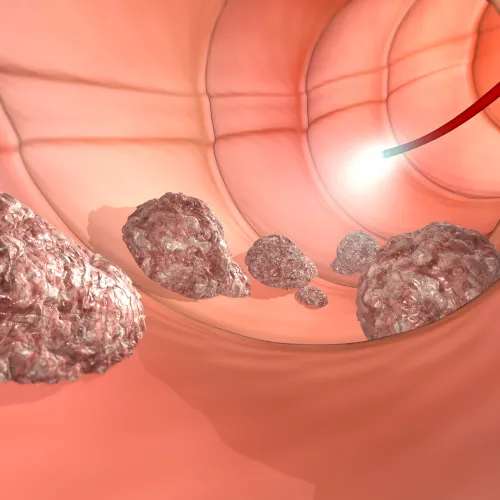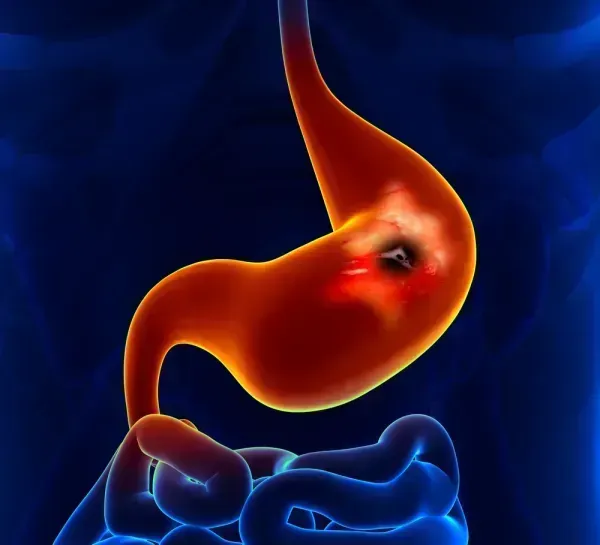Gastroenterology Coding Alert
Keep This Colonic Polyp Code Guide at Hand to Maximize Returns
Distinguish between non-neoplastic and neoplastic polyps will save your bacon.
Colonic polyps is one of the common findings when your gastroenterologist performs a screening colonoscopy. You can resort to a general ICD-10 code to describe the finding, or you may apply a more specific diagnosis code after receiving the pathology report.
Here’s how to identify colonic polyps in the new ICD-10 system and provide you with the corresponding diagnosis code. “It is not necessary for the gastroenterologist to provide a diagnosis code for the pathologist’s final interpretation of the submitted specimen,” says Michael Weinstein, MD, Vice President of Capital Digestive Care. “That chore belongs to the laboratory.”
Understanding the Polyps is Half the Battle
When selecting a diagnosis code for a polyp or snare removal polypectomy, you should answer these three basic questions:
1. What was the polyp’s specific location? For polyps in the colon, documentation should indicate the specific colon site, it wouldn’t do to just write polyp in the rectal area or somewhere higher in the colon. ICD-10 codes are very location specific and even for the colon region there are six polyp codes (D12.0 - D12.5) based upon whether the polyp is in the cecum, appendix, ascending colon, transverse colon, the descending colon, or the sigmoid colon. You should now use the non-specific polyp code D12.6 (Benign neoplasm of colon, unspecified) only as a last resort. Prior to October 1, you reported ICD-9 code 211.3 (Benign neoplasm of colon) for the whole colon.
For the rectal region also, the codes have expanded to D12.7 (Benign neoplasm of rectosigmoid junction), D12.8 (Benign neoplasm of rectum), and D12.9 (Benign neoplasm of anus and anal canal) whereas earlier you had just one: 211.4 (Benign neoplasm of the rectum and anal canal).
2. Was this really a polyp removal or something else? Gastroenterologists use the snare removal technique to completely remove an abnormal growth or to partially remove a piece of a larger mass for pathologic identification. Look for the key words within the procedure description, including “polyp,” “lipoma,” or “mass.”
3. What if the neoplasm’s exact site is untraceable? In cases of colon cancer, sometimes your physician may find it difficult to pinpoint the cancer’s primary site because the cancer has already metastasized to neighboring tissue. In such cases, you can report code C18.8 (Malignant neoplasm of overlapping sites of colon) or C18.9 (Malignant neoplasm of colon, unspecified).
Check Path Report to Determine Correct Colonic-Polyp Type
The physician will demarcate a polyp either as non-neoplastic or neoplastic but only after the final pathology report. This finding decides the proper time interval for a follow-up colonoscopy. “While it is necessary to know the final polyp type to determine the proper colonoscopy follow-up interval, it is not necessary to apply the final code to a claim, Weinstein adds. Although most polyps do not usually turn cancerous, they may still cause gastrointestinal problems such as bleeding and obstruction. The role of the pathology report in coding is crucial because pay-for-performance measures for physicians include a “Colon Polyp Surveillance” measure for the selection of the proper colonoscopy follow-up surveillance interval, thus adding a whole level of CPT® codes.
If you are looking at the pathology report to determine a diagnosis code, you may will encounter several different types of non-neoplastic colonic polyps that include:
Hyperplastic: Although they are not neoplasms per se, hyperplastic polyps in the colon most often occur in the rectal region, and you should report them with codes in D12.7-D12.9 code range. Hyperplastic polyps noted in any other region are reported with codes D12.0-D12.5.
Mucosal: These are usually benign, and you should also report them with colonic codes D12.0-D12.5.
Inflammatory or pseudopolyps: These often occur in patients with inflammatory bowel disease or ulcerative colitis. In this case, you should report inflammatory codes from the family K51.4 (Inflammatory polyps of colon) to report these polyps instead of a code from the neoplasm table. Based on the presence or absence of further complications noted by the physician, the code further expands to K51.40 (Inflammatory polyps of colon without complications) or K51.41- (Inflammatory polyps of colon with complications). For example, if the GI notes that the pseudoplyp has an abscess, then you will have to report K51.414 (Inflammatory polyps of colon with abscess).
Hamartomatous (also called Peutz-Jeghers polyps or a juvenile polyp): Again, in this case, rather than a code from the neoplasms table, you should report either code Q85.8 (Other phakomatoses, not elsewhere classified) or Q85.9 (Phakomatosis, unspecified).
You may also find mention of neoplastic polyps in the path report or the physician notes. Types of neoplastic polyps can be:
Adenomatous polyps (APs): Most colorectal cancers arise from this polyp type and the cancer largely can be prevented by the detection and removal of adenomatous polyps. However, not all adenomas develop into cancer. Because of the potential for malignancy, most insurers will reimburse follow-up and surveillance procedures for patients who have adenomatous polyps. Patients with APs are usually designated as having a history of colonic polyps (Z86.010, Personal history of colonic polyps).
If the path report declares a diagnosis of AP of the colon, then the polyp is benign, and will be coded from the D12.- code range. Don’t get confused if you find terms such as tubular adenoma (a benign polyp), villous adenoma of the colon (a carpet-like polyp that can have an uncertain behavior, coded as D37.4, Neoplasm of uncertain behavior of colon), or tubulovillous adenoma (a combination of the tubular and villous adenomas and is usually benign, coded either with D12.- or D37.4). These are the three subcategories of adenomatous polyps. The path report may identify them specifically instead of calling it an adenoma.
Combination: Occasionally, a polyp is a combination of hyperplastic and adenomatous types. Also known as a serrated adenoma, you should report this mixed polyp as you would an adenomatous polyp (D12.- or D37.4). A patient may also have multiple polyps of different morphologies, such as hyperplastic polyps and APs. In such cases of different diagnoses, you can report one code for each type of polyp.
Adenocarcinomas: When an adenomatous polyp becomes cancerous, it is called an adenocarcinoma and is malignant. Sometimes a neoplastic polyp will contain an area of adenocarcinoma. In these reports the designation may be “carcinoma in situ.”
Familial polyposis (also known as adenomatous polyposis coli): This is a genetic condition in which the patient has dozens or even hundreds of adenomatous polyps in the colon. Familial polyposis is benign. However, this condition almost certainly leads to colon cancer, and, when any of these polyps turn malignant, the condition is generally referred to as adenocarcinoma in adenomatous polyposis coli. For this condition, you should add code Z83.71 (Family history of colonic polyps). If the patient indeed has the polyposis syndrome then as above for adenomatous polyps your diagnosis code is D12.-.
Gastrinomas or carcinoids: These relatively rare neuroendocrine tumors are generally referred to as a benign or a malignant gastrinoma or carcinoid. You should code this condition as D3A.029 (Benign carcinoid tumor of the large intestine, unspecified portion).
For Other Neoplasms, Keep These Types in Mind
Pathology reports may also mention submucosal polyps identified variously as lymphoid aggregates, lipomas, leiomyomas, pneumatosis cystoid intestinalis, hemangiomas, fibromas, and metastatic lesions. These can be neoplastic or non-neoplastic and can appear to be typical colon polyps or neoplasms at the time of the procedure and lesion removal. Lipoma can be diagnosed endoscopically because of its yellow color and softness (pillow sign). The GI may employ ultrasound (EUS, 45391, Colonoscopy, flexible; with endoscopic ultrasound examination limited to the rectum, sigmoid, descending, transverse, or ascending colon and cecum, and adjacent structures) support to define the site of origin and for biopsy of submucosal lesions if the diagnosis is in doubt (45392, Colonoscopy, flexible; with transendoscopic ultrasound guided intramural or transmural fine needle aspiration/biopsy(s), includes endoscopic ultrasound examination limited to the rectum, sigmoid, descending, transverse, or ascending colon and cecum, and adjacent structures). They rarely become malignant. You should report them with codes from D12.-.
Heads up: The pathology report is also important because it may also provide information on whether it is primary, secondary, or in situ in case of malignancy. For reporting malignant polyps you should report with a specific location within the colon from the diagnosis code range C18.- (Malignant neoplasm of colon), with a code for cancer in overlapping regions (C18.8), or with a code for an unspecified location (C18.9). You can also choose from C19 (Malignant neoplasm of rectosigmoid junction) or C20 (Malignant neoplasm of rectum) for the rectal region malignancies.
Example: A gastroenterologist performs screening colonoscopy for a Medicare patient due to family history of colon cancer. The patient has no signs and symptoms and also does not have a personal history of any gastrointestinal problems. During the colonoscopy, gastroenterologist finds a polyp in the ascending colon. He then removes the same using snare technique.
Since the gastroenterologist found a polyp during the screening, you cannot report G0105 (Colorectal cancer screening; colonoscopy on individual at high risk) or G0121 (Colorectal cancer screening; colonoscopy on individual not meeting criteria for high risk). Instead, you should report the therapeutic procedural code that your gastroenterologist performed to eliminate the polyp that was found. As your gastroenterologist removed the polyp using snare technique, you will have to report 45385 (Colonoscopy, flexible; with removal of tumor[s], polyp[s], or other lesion[s] by snare technique) instead of the screening HCPCS code. You should also add the PT modifier (Colorectal cancer screening test; converted to diagnostic test or other procedure) to the CPT® code to tell the CMS contractor that this was a “screening” exam turned therapeutic. You will have to use the Z code Z12.11 (Encounter for screening for malignant neoplasm of colon) if this was the patient’s initial screening examination, and Z80.0 (Family history of malignant neoplasm of digestive organs) to support the medical necessity of conducting the colorectal cancer screening for the patient. The ICD-10 code for the removed colon polyp is D12.2 (Benign neoplasm of ascending colon).
Related Articles
Gastroenterology Coding Alert
- ICD-10 Coding:
Keep This Colonic Polyp Code Guide at Hand to Maximize Returns
Distinguish between non-neoplastic and neoplastic polyps will save your bacon. Colonic polyps is one of [...] - CPT® 2016:
Get Ready to Welcome New and Revised Prolonged Services Codes Next Year
Revised codes can be added on to any service level, not just the highest. Change [...] - GERD Testing:
Confront Esophageal Manometry Coding Challenges Head-On With This Refresher
Don’t use codes 0240T and 0241T for CY 2016. As a gastroenterology practice, you may [...] - Reader Question:
Don't Expect a Direct Diagnostic Code for Reporting Lynch Syndrome
Question: We are seeing Lynch syndrome cases. What are the best diagnosis codes to use for [...] - Reader Question:
Let the Actual Procedure Performed Guide Your Colonoscopy Codes
Question: A patient who had total colectomy and still had a rectal stump visited our office. [...] - Reader Question:
Do Not Combine 74360 With 43233 for Balloon Dilation >30 mm
Question: Our gastroenterologist recently performed an EGD on a patient with achalasia. The notes stated that [...] - You Be the Coder:
This Handy Guide Unlocks Your Transendoscopic Stent Placements Coding
Question: We received a case a few days in which the GI placed a duodenal stent [...]




